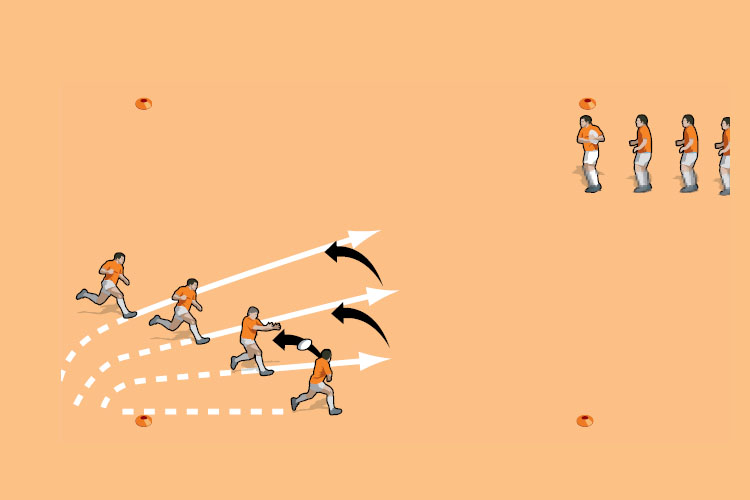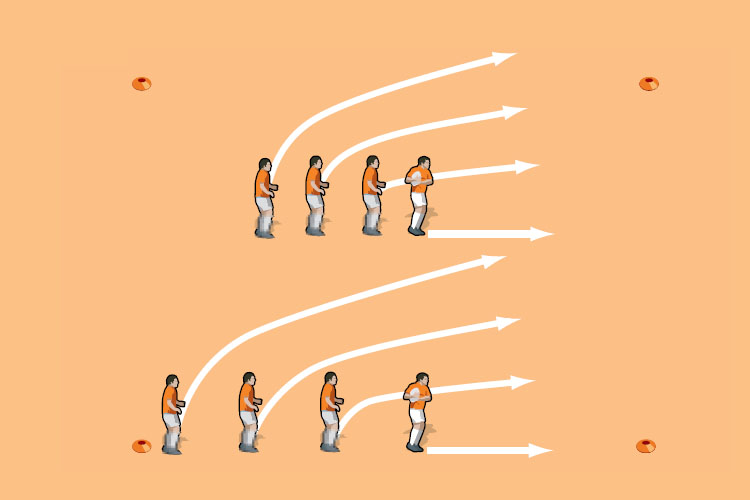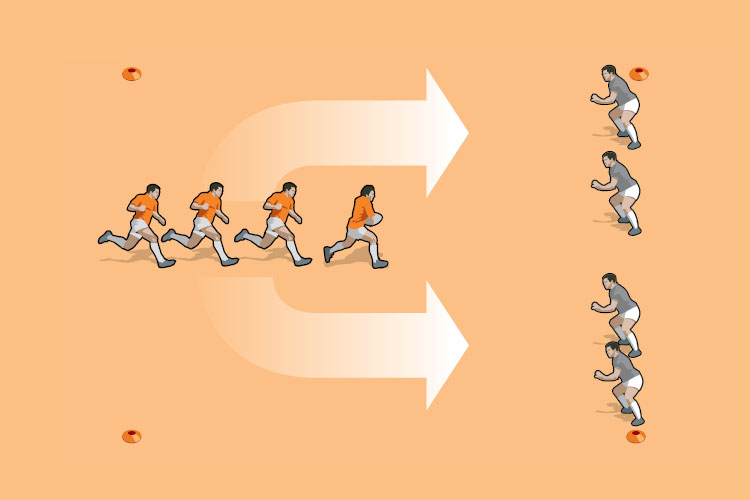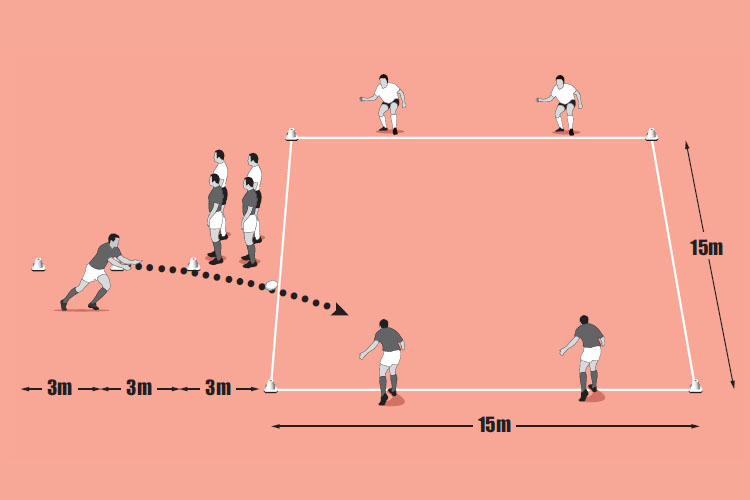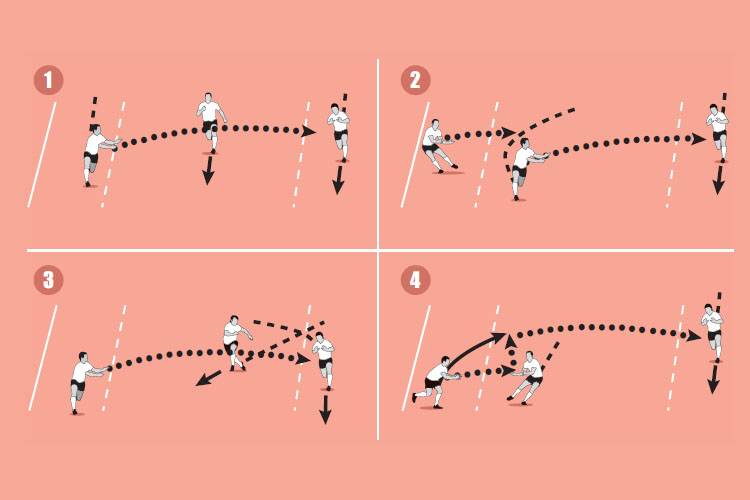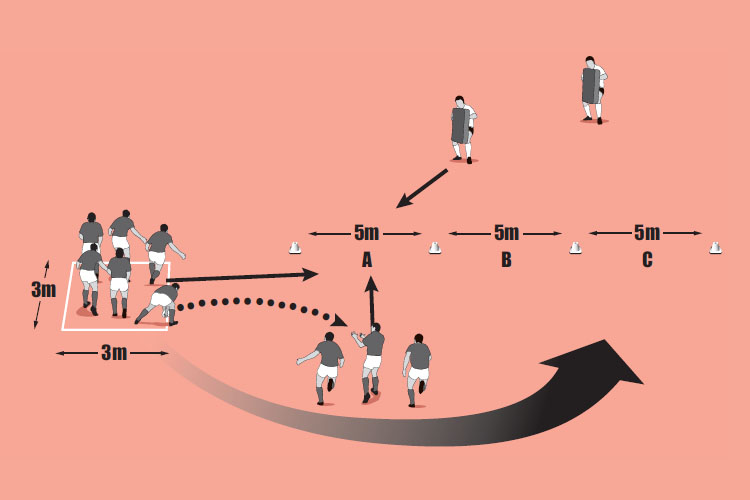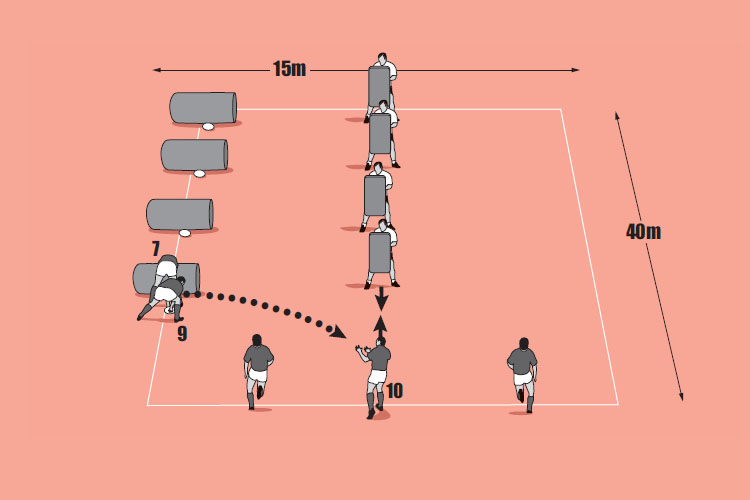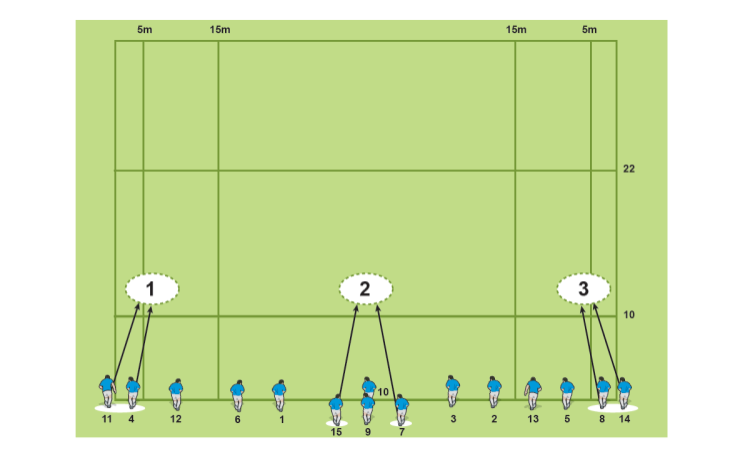You are viewing
1 of your 2 free articles
Sweep for pace
Taking a pass at pace means that defenders need to quickly refocus from passer to receiver. This means the receiver has more chance of going through gaps and creating space. And of course they are more difficult to tackle. This session has receivers appearing from behind the ball carrier to add pace on to the ball.
Warm up time: 7-10
Session time: 10-15
Development time: 10-15
Game time: 10-15
Warm down time: 7-10
What to think about
- Are your players drifting once they have received the pass? If the players are automatically sliding across, ask them to “attack” the pass with their hands and to step towards the pass as it comes to them. This should help give space for the players wider out.
- Do the players always take the ball at full pace or are they catching it then accelerating?When the players line up at the start, have them stand one to two metres apart. This will create more depth with players running faster to catch up and therefore taking the ball at approaching full pace.
set-up
- Move the ball to the outside player quickly while moving forward at pace.
- “Sweep out” to the side, using an arc running line.
- Straighten up as you catch the ball.
- Move on to the pass as quickly as you can.
- Pass in front of the receiver.
What you get your players to do
Split your squad into three or four groups of four to six players. Stand two groups at one corner of a box with another one or two groups diagonally opposite. The first group is lined up one behind the other with the lead player holding a ball. On your signal the lead player runs forwards as the rest of the group sweep out across the square, running in an arc. The ball is passed along the line to the outside player, who hands it over to the group diagonally opposite.Development
- Start the players on their knees, then on their stomachs.
- Start the players standing further apart, so creating more depth and therefore more pace on to the ball.
- Use a miss pass for the first pass, with the second player receiving an inside pass before the all is moved wide.
- Have two groups going at the same time so they cross over in the box. This is the start of developing decision making at speed.
Related Files
Game situation
Split the players into teams of four to six a side. The attacking team always begins with a tap pass, with the player aligned one behind the other. The defence spreads out in a normal defensive shape. The attack can sweep out to the left or right or to both sides. Play normal rugby rules otherwise.What to call out
- “Go forward then pass”
- “Pass in front. Make the receiver move on to the ball”
- “Time your run so you catch at full pace”
- “Reach for the ball”
- “Create space outside – straighten up when you get the ball”
Newsletter Sign Up
Coaches Testimonials

Gerald Kearney, Downtown Las Vegas Soccer Club

Paul Butler, Florida, USA

Rick Shields, Springboro, USA

Tony Green, Pierrefonds Titans, Quebec, Canada
Subscribe Today
Be a more effective, more successful rugby coach
In a recent survey 89% of subscribers said Rugby Coach Weekly makes them more confident, 91% said Rugby Coach Weekly makes them a more effective coach and 93% said Rugby Coach Weekly makes them more inspired.
Get Weekly Inspiration
All the latest techniques and approaches
Rugby Coach Weekly offers proven and easy to use rugby drills, coaching sessions, practice plans, small-sided games, warm-ups, training tips and advice.
We've been at the cutting edge of rugby coaching since we launched in 2005, creating resources for the grassroots youth coach, following best practice from around the world and insights from the professional game.
